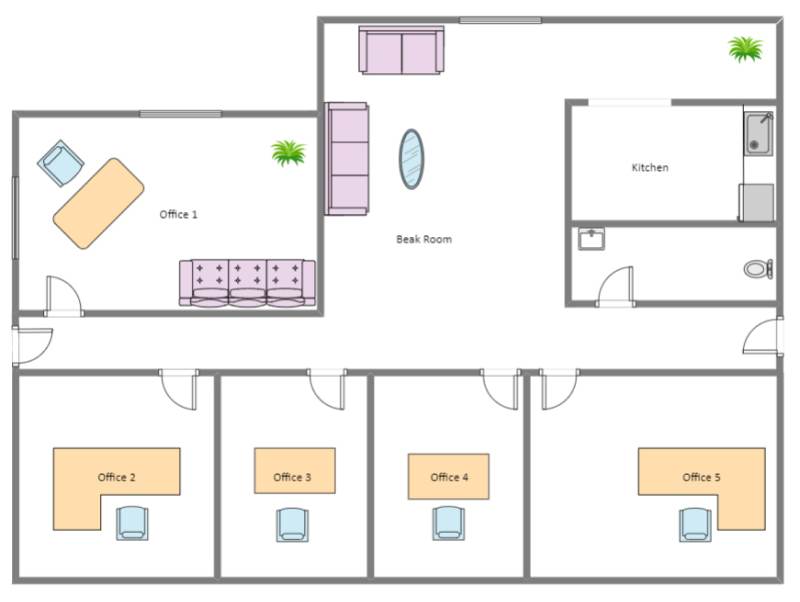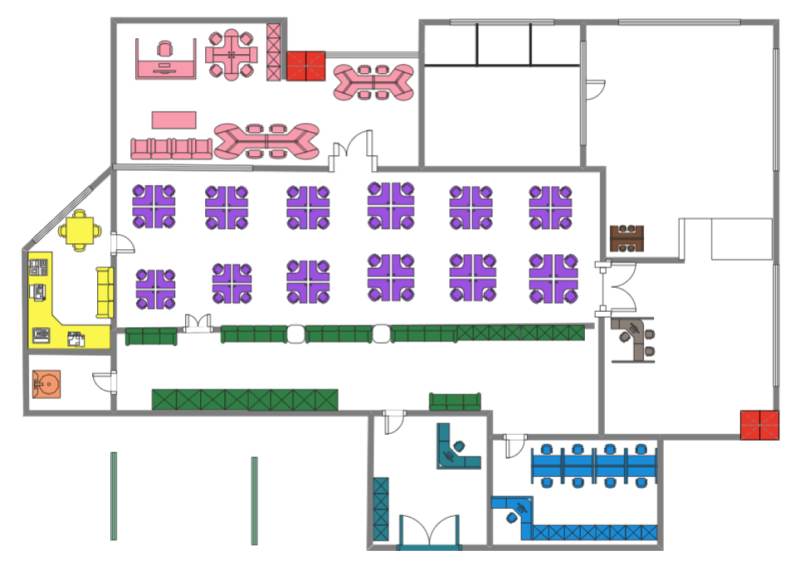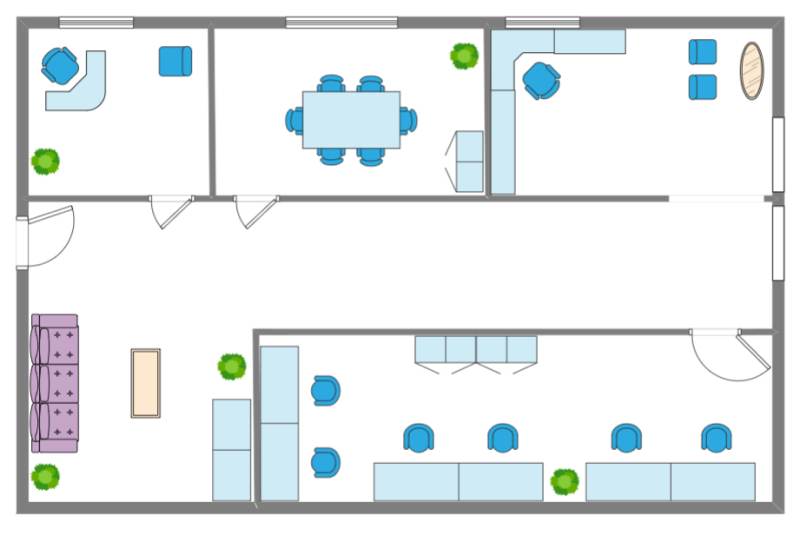Office Layout: Types, Examples, & Tips
Create a Office Layout Online Free Free Download Free Download Free Download Free DownloadYour office can be much more than just a place of work. It can truly transform your business across a series of areas. It cannot only change the way you present yourself; it can also change the work environment for your employees. Moreover, it can make a perfect first impression, whenever a client or a prospect walks in through the entrance. You can make a business statement with a well-planned office layout.
In this article, we will look into office layouts and how to plan one.
1. What is an Office Layout?
An office layout reflects the corporate statement of your business. More than that, it creates a wholesome environment that can make everybody at ease but efficient in their work at the same time. Hence, it is best to plan your office floor plan as per the atmosphere you want to create in your office.
The term office layout deals with the design and décor of an office. It takes into account all the equipment, supplies, accessories, and designs an arrangement needed for the proper functioning of an office. All are within the available floor space so that all procedures and personnel can work efficiently and effectively.
In simpler words, it is the blueprint of the office floor, and hence, called the office floor plan. An office layout can be practical only when it makes your employees more efficient in their tasks. Let’s say, for example, an office floor plan where all the employees in your accounts department get grouped into one area or floor depending on the space available. It will help them to carry out their tasks more efficiently as they can now communicate within themselves much better than before.
2. Main Objectives of Office Layouts.
There are a few aspects you need to consider while designing a good office floor plan or layout. There are some minimum standards or objectives that an office layout needs to suffice. The main aim, however, remains to be the streamlined workflow, keeping in mind employee satisfaction. The following are the main objectives of an office floor plan:
- To ensure proper and effective use of the floor space available;
- To facilitate managers with better supervision and control of their workforce;
- To ensure steady and effective workflow to increase production;
- To provide a wholesome environment to employees to make them feel safe and comfortable at the workplace;
- To facilitate better inter-communication between various departments by interlinking them as needed;
- To provide adequate privacy for your staff working on confidential projects;
- To ensure a disturbance-free working environment by insulating the office floor from external noises;
- To include provisions for future expansion of the company.
A whole amount of planning makes an excellent office floor plan needed for satisfying the high standards or objectives is always favorable to your business.
3. Different Types of Office Layouts.
In an Open-Planoffice layout, there are no walls or separators between workstations. Instead, they get defined by furniture in the office area, including cupboards, shelves, cabinets, etc. The desks may get stacked up side-by-side or replaced altogether with work-tables capable of facilitating multiple employees at one go.
Image Source:gstatic.com
Pros & Cons:

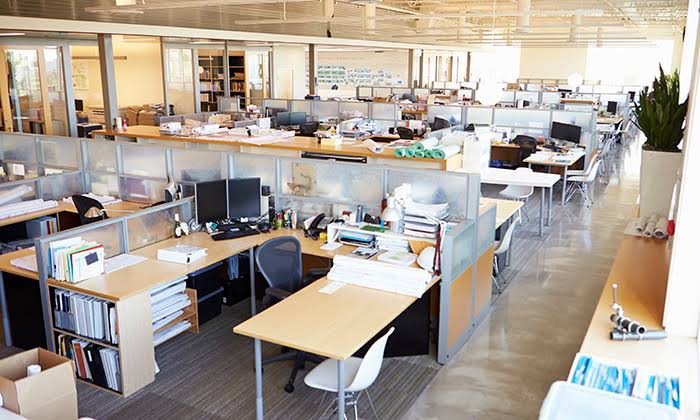
A private office layout uses a cellular style workstation, with the interior walls reach up to the ceiling. It means that these parts are completely sealed off from the rest of the office floor. It is the most widely preferred seating arrangement for the senior managers of an organization. Sometimes more than one manager would share a private office.
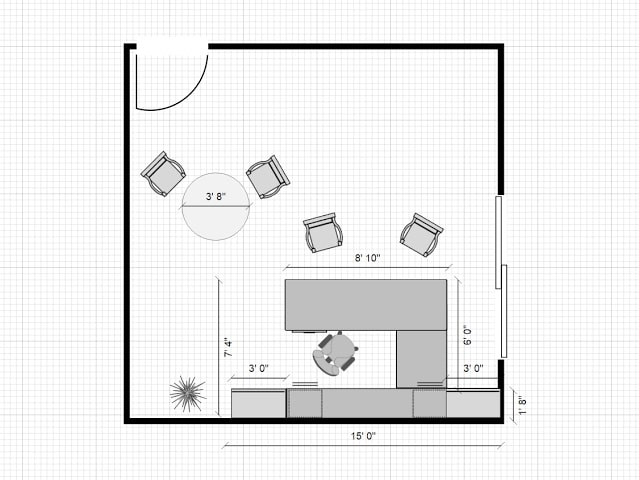
Image Source: gstatic.com
Pros & Cons:

A cubicle office layout is the most used type. It is a type of open plan layout where the workspaces are separated from one another using partitioning walls to form a shape of a cube, hence cubicle. It is the most cost-efficient type of office layout. You can see this type of plan in combination with private offices for senior staff and built-in meeting rooms.
Pros & Cons:

It is one of the greatest innovations in office layout designing in this century. These plans are best for the self-employed who generally are mobile with their work. What’s more, is that you don’t need to create this workspace; but pay a small fee and find a workstation you like or a spot on the lounge.
Pros & Cons:

Suppose you have space at your home, then you can design a home office layout for yourself. You have to follow no specific format to create your home office. You can use as much space as you want and anything in your office. Your home office layout must have a good chair and a work table. If you have clients at your house, you can add sofas and other chairs. Include a cupboard for files and documents, and color your walls to your liking.
Pros |
Cons |
|
|
You can use a small office floor plan when there are fewer employees in your company. This type of office layout only works when your company only has ten employees. Small offices are the best for collaboration and communication between colleagues. You can only have limited space in a small office, so when new employees are at your company, you either have to change office or re-model.
Pros |
Cons |
|
|
You can use an oval office layout if you have extra space and want a big and classy office. An oval office layout is different from a general office as you don't have any straight walls to design and place the furniture. You can place sofas and chairs along with your chair and table in the middle, and the sides must be empty for people to move around the office quickly. You can decorate the office walls and use small tables to place room décor.
Pros |
Cons |
|
|
4. Benefits of Good Office Layouts
- 1. Economic stabilization of your business through cost reduction in office maintenance;
- 2. Better morale and goodwill with both employees and clients;
- 3. Improved workforce efficiency through the best possible use of office machines and equipment;
- 4. Improved production due to better supervision;
- 5. Enhanced inter-departmental communication through proper use of floor space.
These are just a few of the varied benefits of a proper and effective office floor plan.
5. Office Layout Ideas
There are many things to consider before you design your office layout. In the past, a cubical was a standard for every office layout, but nowadays, efficiency and best use of workplace is more important. You have to make sure that the office layout is best for your employees and you are optimizing the available space to accommodate all of your employees. You also need to add meeting rooms where employees will interact with clients. Please look at some of the popular office layout ideas down here, and they will help you pick a suitable layout based on your line of work.
- 1.
- More natural lighting by designing the layout in such a manner that the office faces either the North or the East;
- 2. Maximum utilization of available floor space to create a complete workspace environment by accurately placing computer consoles and worktables keeping in mind factors such as lightning, ventilation, etc.;
- 3. Ensuring proper flow of work by designing the layout after careful study of the sequence of tasks to be carried out daily and implementation of unidirectional workflow while designing;
- 4. To bring balance to the workflow by creating an aesthetically pleasing floor plan;
- 5. Improving employee efficiency by provisioning necessary processes and tools with easy access;
- 6. Enhancing employee morale by implementing provisions needed for every employee based on their tasks in the layout design;
- 7. Restricting the number of private offices by carefully and accurately asserting the need for such offices as they are quite costly to implement;
- 8. Inclusion of adequate exit routes in an office layout for safe passage in case of an emergency, thus considering the safety of all;
- 9. Designing both informal and formal spaces in the layout, to set them accurately;
- 10. Provisioning for the scope of future expansion.
6. Office Floor Plan Examples: Traditional VS. Stylish.
In this section, we will take two examples of office floor plans: one traditional and one more modern and stylish. We will analyze the various features of these two examples, the style portrayed, and the advantages each possess. Find more office layout templates.
Features:

Style:

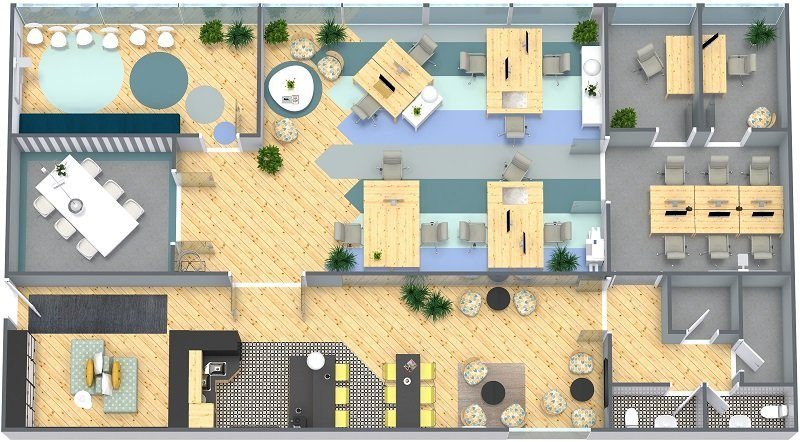
Image Source:roomsketcher.com
Advantages:

7. How to Plan An Office Layout with EdrawMax Online?
Before we plan an office floor plan with EdrawMax online, there are a few things you must note.
- Be familiar with the interface of the online designer, the symbols, floor plan templates, and examples of the online designing software.
- Be aware of the arrangement of the office furniture so that there is adequate space for free movement of all.
- Another thing to keep in mind is a comfortable and ergonomic design.
Now, let us see how to create an office layout with EdrawMax:
Step 1:
Open EdrawMax Online and login with your credentials.
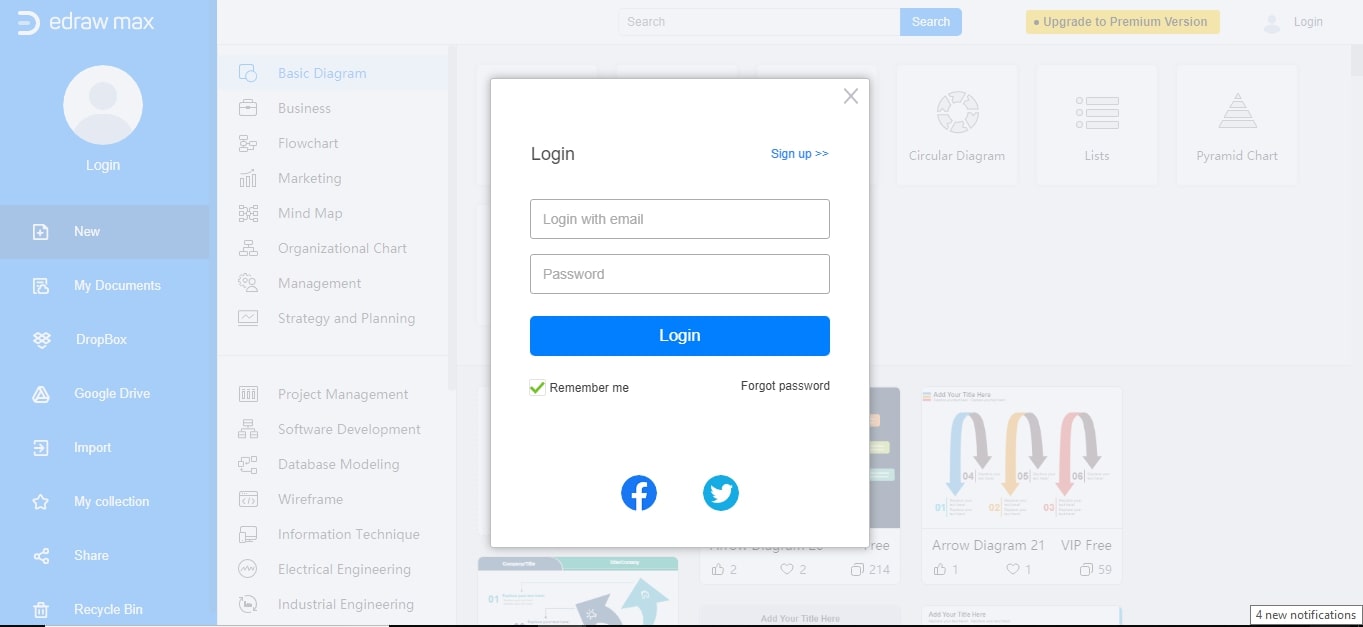
Step 2:
Scroll down the immediate left menu bar and find the “Building Plan.” On that same page, click on “Office Layout.”
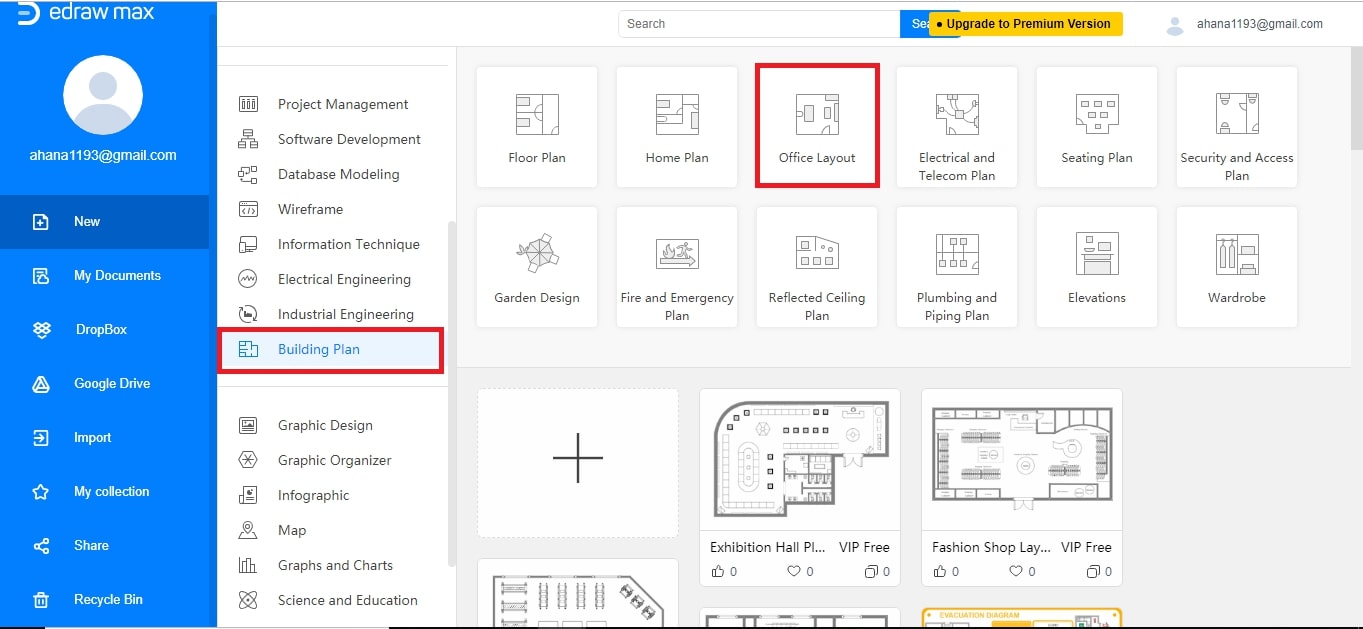
Step 3:
Scroll down to find the customized and template options available for Office Layout.
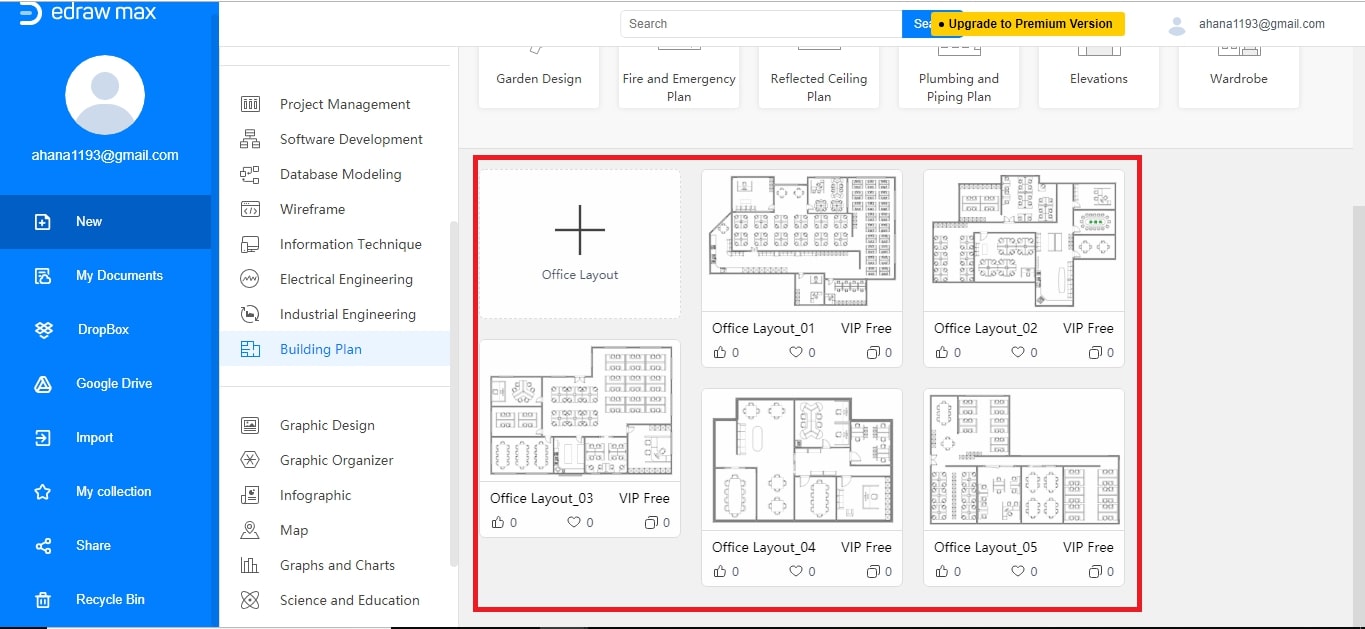
Step 4:
Click on “+” to start making the Office Layout from scratch or click on any of the available templates to start editing them accordingly.
Step 5:
Once the entire drawing and planning are over, save it by clicking on the “Save As” option from the “File.” Select the location you want to save the file at, change the name, and click on "OK."
Here you can find detailed steps of how to design an office layout.
8. New Trends in Office Layout
Modern offices are more than just your workspace. They do not portray the traditional office environment. These offices are more focused on creating a wholesome and friendly environment for employees.
Biophilic designs go a long way to create a comfortable working environment. The integration of technology is another trend in 21st-century offices.
9. Office Design Software
Designing an office layout with diagramming software such as EdrawMax Online would be best. It is the best office design software as you can create your office layout in no time using it. It comes with a comprehensive template gallery. You can get professional templates and design your office layout, and it gives you lots of customization tools to make changes in the templates. With EdrawMax, you can also create an office layout from scratch by using its symbol library. If 2D doesn't work for you, you can use 3D icons to make the layout. It also gives you the option to make slides and export your diagram in any format you want.
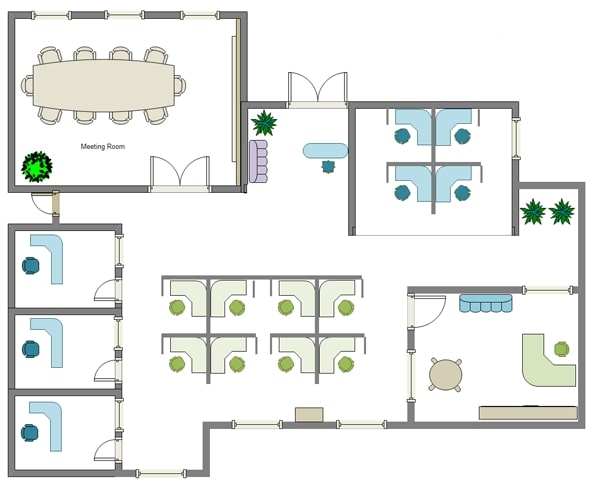
 below.
below.  below.
below. 